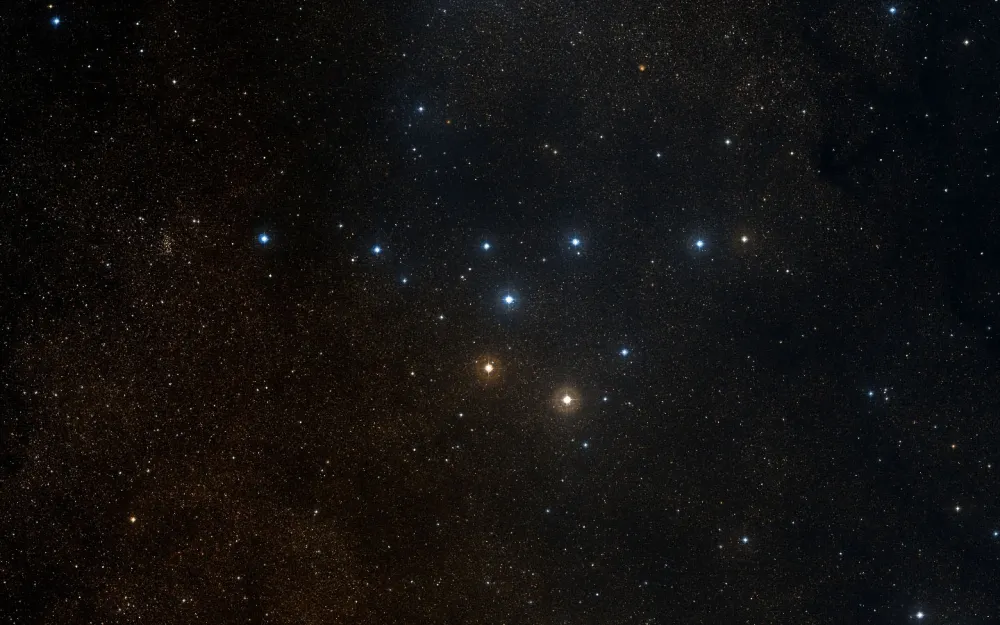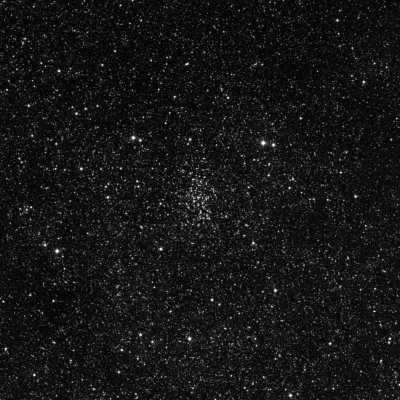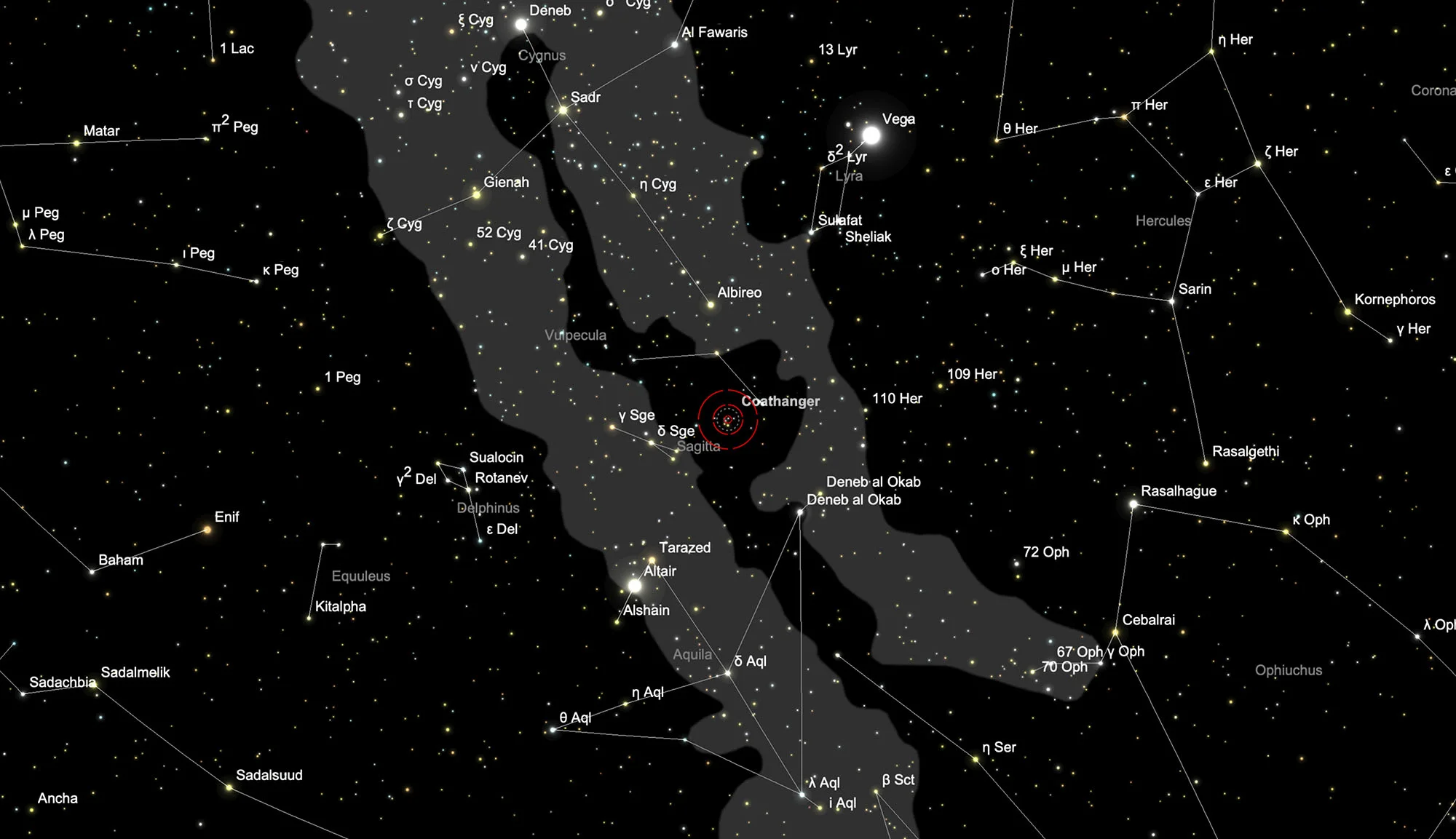Coathanger Cluster, Brocchi's Cluster (Collinder 399)

History
Records of this cluster go back to the 10th century when the Persian astronomer Al-Sufi referred to it as a small cloud. Around 1000 years later, in 1903, it was mentioned in the «Communications from the Royal Wroclaw Observatory». [93] But it was not until 1931 that the Swedish astronomer Per Collinder added the Coathanger to the group of open star clusters. Collinder summarized the open star clusters known at the time in a catalog as part of his dissertation and listed it as the 399th object. His catalog, which contains a total of 471 open star clusters, is based on the survey of the Franklin-Adams maps, the NGC catalog and its extensions, as well as the catalogs by Bailey, Melotte, Raab, Shapley, Trumpler, etc. [455]
Sometimes Cr 399 is also referred to as Brocchi's Cluster. The name finds its origin in the 20s of the 20th century. At that time, the American amateur astronomer D. F. Brocchi made a map of Cr 399 for the purpose of calibrating photometers. [93] Occasionally the name «Himmelsfähnchen» (sky flag) is also to be found among the German speaking amateur astronomers.
Physical Properties
It is often doubted whether Cr 399 is a real star cluster and yet the number of members is often given in the literature as 40 or more stars. In 1970 Hall and Landingham examined the stars in the area of this cluster for mutual and movement. However, they came to the conclusion that only six bright stars are physically connected and that no weaker stars belong to them either. According to them, the cluster is around 200 million years old. A study of 2008 verified, that Cr 399 truly is not a real open cluster, but just an asterism. [574]
At the end of the 1980s, Pavlovskaya and Filipova studied star clusters that move together in space. They came to the conclusion that Cr 399 and 17 other star clusters probably form a complex. [575]
The Coathanger cluster is about 300 light years away and is moving towards us at about 18 km/s. He stands in front of a dark cloud, which he partially illuminates. The southern tip of the hook is formed by the 5.3m star 4 Vulpeculae. Only 19 arcseconds away from this is an optical companion with a brightness of 10 magnitudes. [93]
| Name | Collinder 399 |
| Object Type | Cluster of Stars |
| Right Ascension (J2000.0) | 19h 25m 24s |
| Declination (J2000.0) | +20° 11' 00" |
| Magnitudes | B 3.93; V 3.6 |
| Identifiers | C 1923+200; Cl Collinder 399; NAME AL SUFI's Cluster; NAME Brocchi's Cluster; NAME Coathanger; OCl 113.0 |
NGC 6802

The open cluster NGC 6802 can be found in the shadow of the Coathanger Cluster, which is much larger in apparent diameter. The small but dense open star cluster of about 50 stars was discovered by William Herschel with his small 6.2 inch reflector telescope on 22 September 1783 and cataloged as WH VI 14. The cluster is located east of Cr 399 and has a diameter of about three arc minutes. The brightest stars are about 13 mag, but the overall brightness is 8.8 mag. [22, 277]
| Designation | NGC 6802 |
| Type | OCL (III1m) |
| Right Ascension (J2000.0) | 19h 30m 36.0s |
| Declination (J2000.0) | +20° 15' 42" |
| Diameter | 5 arcmin |
| Visual magnitude | 8.8 mag |
| Metric Distance | 1.124 kpc |
| Dreyer Description | Cl, L, vC, E 0°, st 14…18 |
| Identification, Remarks | WH VI 14; h 2042; GC 4498; OCL 114 |
Finder Chart
The two star clusters are very easy to find, because the larger of the two can be seen with the naked eye on a dark night. Both are about eight degrees south of Albireo (β Cygni) in the constellation Vulpecula. One can orientate oneself by the small constellation Sagitta. On 13 July the clusters are opposition to the Sun and crosses the meridian at local midnight.
